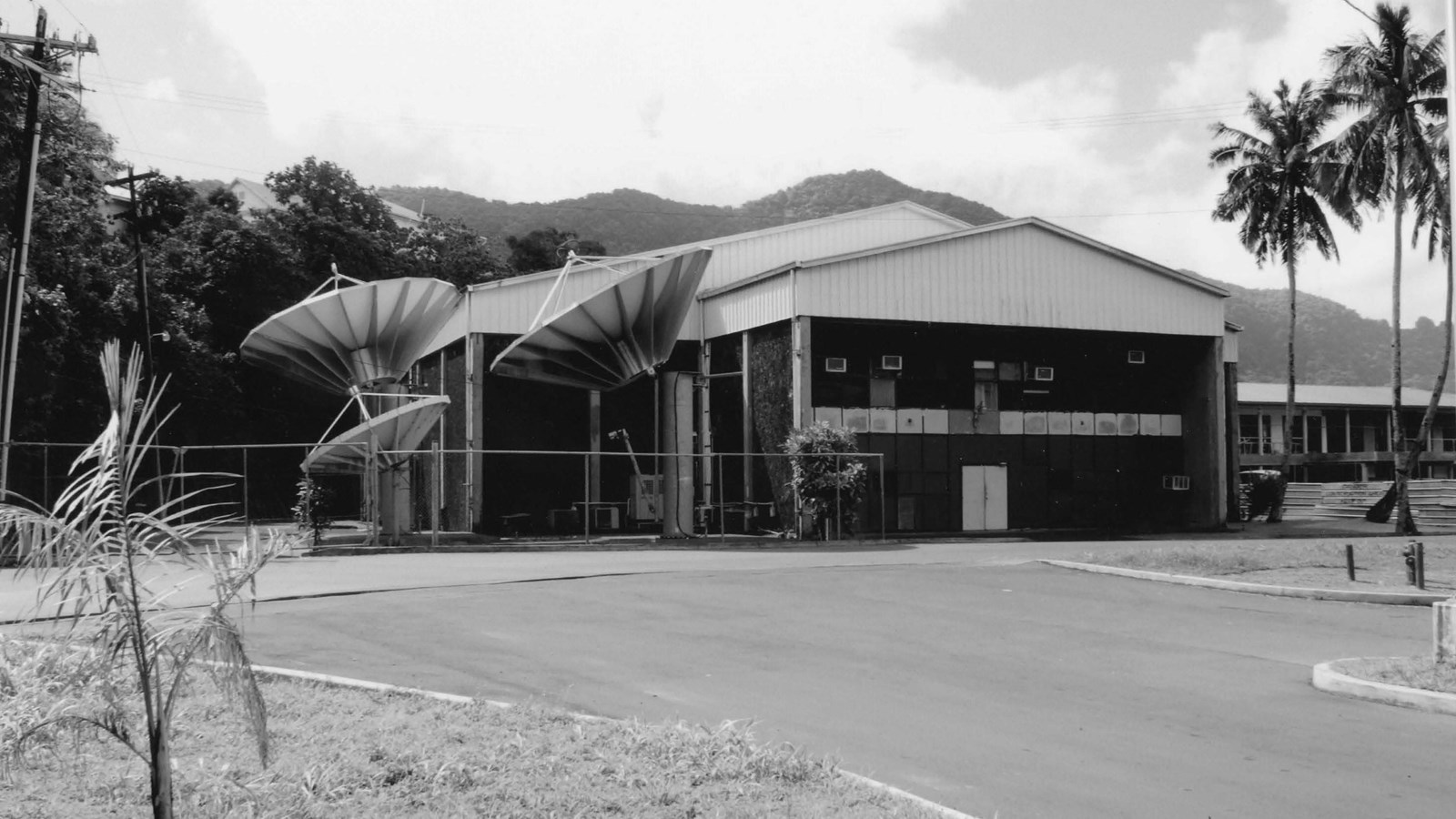Last updated: November 20, 2023
Place
Michael J. Kirwan Educational Television Center

Photograph courtesy of the American Samoa Historic Preservation Office
Quick Facts
Location:
Route 118, N. side of Utulei, Utulei, American Samoa
Significance:
Communications, Education
Designation:
Listed in the National Register - Reference number 09000842
OPEN TO PUBLIC:
No
MANAGED BY:
The Michael J. Kirwan Educational Television Center in Utulei, American Samoa, was listed in the National Register of Historic Places in 2009. It is significant as an integral part of a "bold experiment" to transform education in American Samoa in the 1960s and 1970s.
American Samoa was administered by the U.S. Navy beginning in 1900, after it ceded itself to the United States. While the territory served as a staging area for the U.S. military during World War II, it was largely neglected and dire infrastructural problems. In the 1960s, Americans began to call for economic aid to the protectorate, which included a revitalization of the education system.
A major pillar of this revitalization was educational television, an idea spearheaded by Governor H. Rex Lee. Assisted by funding secured by Ohio Congressman Michael J. Kirwan, teachers from the mainland were recruited to teach on camera, which would then be broadcast from the Kirwan Educational Television Center to schools across American Samoa. While television was the core mode of instruction, Samoan teachers remained in classrooms, providing context, billingual teaching, and feedback to the television teachers.
The television teaching program was highly publicized, and other developing countries looked to the American Samoan system as a model. The Kirwan Center welcomed interested visitors and dignitaries from around the world, including education ministers from developing nations, Asian and European broadcasters, economic planners from other Pacific island nations, delegations of American school superintendents, and even President Lyndon Baines Johnson.
Into the 1970s, however, political turnover, shifting priorities, and an influx of new television programs in American Samoa led to a decline in the use of educational TV in Samoan classrooms. Today, the building continues to be the home of KVZK, a major local television broadcaster.
American Samoa was administered by the U.S. Navy beginning in 1900, after it ceded itself to the United States. While the territory served as a staging area for the U.S. military during World War II, it was largely neglected and dire infrastructural problems. In the 1960s, Americans began to call for economic aid to the protectorate, which included a revitalization of the education system.
A major pillar of this revitalization was educational television, an idea spearheaded by Governor H. Rex Lee. Assisted by funding secured by Ohio Congressman Michael J. Kirwan, teachers from the mainland were recruited to teach on camera, which would then be broadcast from the Kirwan Educational Television Center to schools across American Samoa. While television was the core mode of instruction, Samoan teachers remained in classrooms, providing context, billingual teaching, and feedback to the television teachers.
The television teaching program was highly publicized, and other developing countries looked to the American Samoan system as a model. The Kirwan Center welcomed interested visitors and dignitaries from around the world, including education ministers from developing nations, Asian and European broadcasters, economic planners from other Pacific island nations, delegations of American school superintendents, and even President Lyndon Baines Johnson.
Into the 1970s, however, political turnover, shifting priorities, and an influx of new television programs in American Samoa led to a decline in the use of educational TV in Samoan classrooms. Today, the building continues to be the home of KVZK, a major local television broadcaster.
